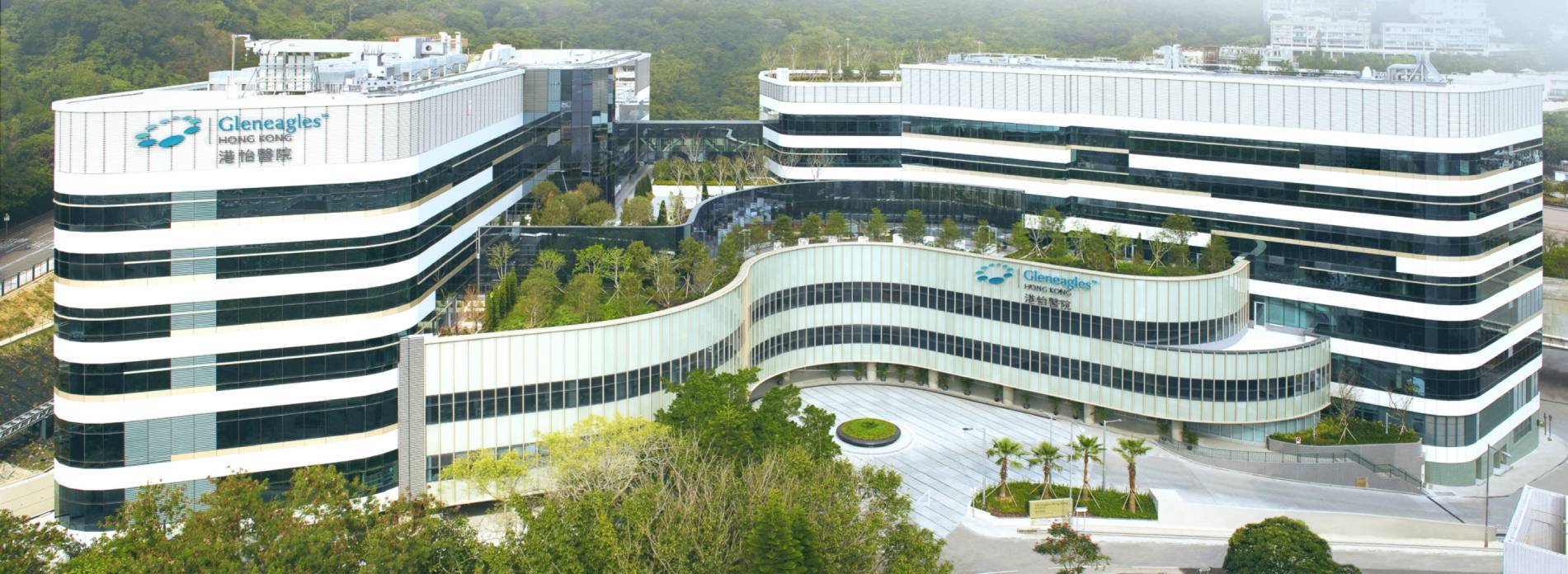Gleneagles Hospital’s Spine Centre
The first private hospital in Hong Kong performing minimally invasive non-fusion scoliosis surgery by anterior vertebral body tethering to achieve faster recovery and allow spinal mobility
(17 November 2020 - Hong Kong) Gleneagles Hospital Hong Kong’s (Gleneagles’) Spine Centre is committed to providing high-quality and safe treatments for patients with spine-related problems. Gleneagles has recently introduced non-fusion scoliosis surgery by anterior vertebral body tethering (VBT), making it the first private hospital in Hong Kong to perform this latest surgical technique.
Gleneagles has established the Spine Centre in July 2019 aiming to provide targeted, professional and comprehensive treatment to patients with common and complex spine conditions. Mr Dirk Schraven, Chief Executive Officer of Gleneagles, said, “The multidisciplinary team of experts at the Centre has performed around 250 spine surgeries to treat a range of spine conditions. The Centre has consistently delivered excellent clinical outcomes, reflected by low complication rates, less postoperative pain, and fast recovery of patients. We currently offer a number of all-inclusive medical packages for common spine-related conditions, and with quality care, excellent clinical outcomes and price transparency, we hope to help alleviate the burden of orthopaedics surgeries in public hospitals in the longer run.”
“Our Spine Centre has been striving to bring innovative and effective treatment solutions to patients. Gleneagles is the first private hospital in Hong Kong to perform non-fusion scoliosis surgery by VBT, which is the first of its kind in Hong Kong and Greater China. The introduction of this new technique also marks the start of a research project between The University of Hong Kong and Gleneagles, which aims to study the long-term clinical effectiveness of VBT on skeletally immature patients suffering from scoliosis”, Mr Schraven continued. Simultaneously, the hospital is looking to provide second opinion service for patients referred by doctors in nearby regions, and plans to run a pilot with spine patients in the Mainland.
Different scoliosis treatment options come with different clinical outcomes
Scoliosis is a three dimensional deformity of the spine with a lateral curvature on the frontal view, commonly described as “C” or “S” shape. Adolescent idiopathic scoliosis (AIS) affecting children at the onset of puberty is the most common. With unknown cause, it occurs more in children aged between 10 and 18, and its prevalence rate in Hong Kong is 3.5%. Untreated severe cases with a spinal curvature of more than 50° may lead to cardiopulmonary compromise, back pain, truncal imbalance etc.
Early detection and treatment could prevent further deterioration of the condition. Among the current treatment options for scoliosis, bracing is suitable for patients with mild to moderate condition if the child is still skeletally immature. Patients have to wear the brace for over 20 hours a day, and the rate of treatment success is only 72%. Severe scoliosis requires a spinal fusion surgery involving, with an open wound, implantation of rods and screws to straighten the spine. Although this is the gold standard treatment, spinal fusion leads to decreased spinal mobility and risk of early adjacent level degeneration in the future.
Leveraging the latest VBT technique and patient’s own spinal growth potential to correct scoliosis
Dr Kenneth Cheung, Director of Gleneagles’ Spine Centre, said, “This novel surgery adopting VBT technique is suitable for patients affected by moderate to severe scoliosis (45°-80° curvature) and when patients are still growing. Through keyhole incisions, under thoracoscopic guidance, titanium screws are inserted at each level at the side of the vertebral bodies on the convex side. The screws are then connected with a non-rigid tether that allows growth on the concave side, which gradually corrects the curve of the spine.” This technique uses the patient’s growth potential to achieve scoliosis correction while maintaining the patient’s spinal mobility. This, theoretically, also decreases the risk of adjacent level degeneration in the future. Citing overseas studies and local clinical experience, he said, “With the advantages of smaller incisions, smaller wounds, and less postoperative pain, this VBT technique enables faster recovery of patients when compared with conventional spinal fusion treatments”.
The team has so far performed over 10 non-fusion scoliosis surgeries using VBT technique. Gleneagles’ Spine Centre has started performing the newest scoliosis surgery with VBT for suitable patients since this year, and it is expected that around 10-20 scoliosis patients will be suitable to undergo this surgery per year. Dr Kenny Kwan, Specialist in Orthopaedics & Traumatology at Gleneagles, added that patients who had underwent a VBT surgery could mobilise independently within a few days after surgery, and went back to school within two weeks after surgery.
Dr Kenneth Cheung and Dr Kenny Kwan reminded that currently there were various treatment options for scoliosis with different outcomes, and patients should discuss with their doctors to choose the treatment suitable for them.
Gleneagles Hospital Hong Kong
Located at Wong Chuk Hang on Hong Kong Island South, Gleneagles Hospital Hong Kong (Gleneagles) is a multi-specialty private hospital, providing 500 beds, cutting-edge medical technologies and a comprehensive range of clinical services spanning more than 35 specialties and subspecialties. As Hong Kong’s top-notch private teaching hospital, Gleneagles also contributes to the training and development of healthcare professionals and advancement of clinical research.
Gleneagles is a joint venture between Parkway Pantai Limited and NWS Holdings Limited, with The University of Hong Kong as its exclusive clinical partner. Parkway Pantai is one of Asia’s largest integrated private healthcare groups and the largest operating subsidiary of IHH Healthcare, one of the largest healthcare groups in the world by market capitalisation, operating more than 15,000 licensed beds across 80 hospitals in 10 countries worldwide.





